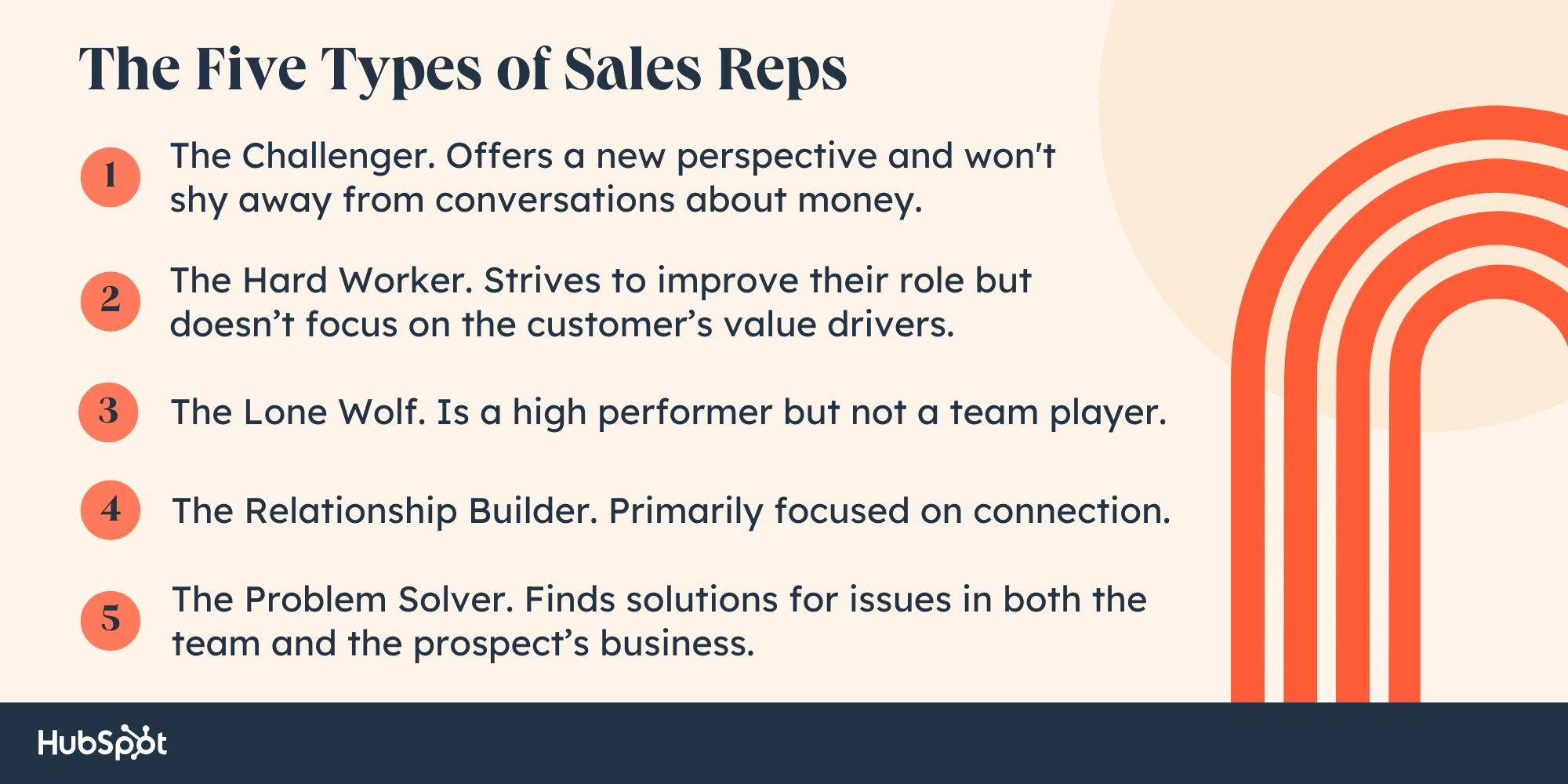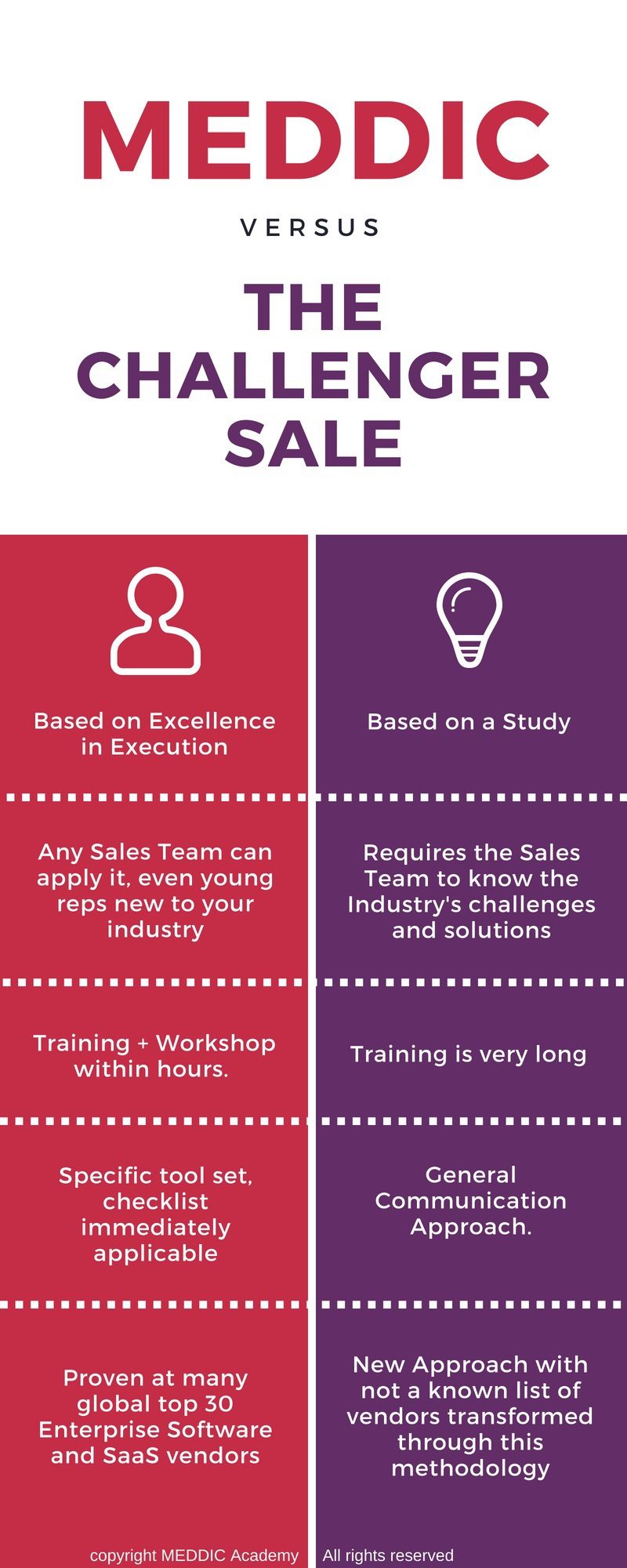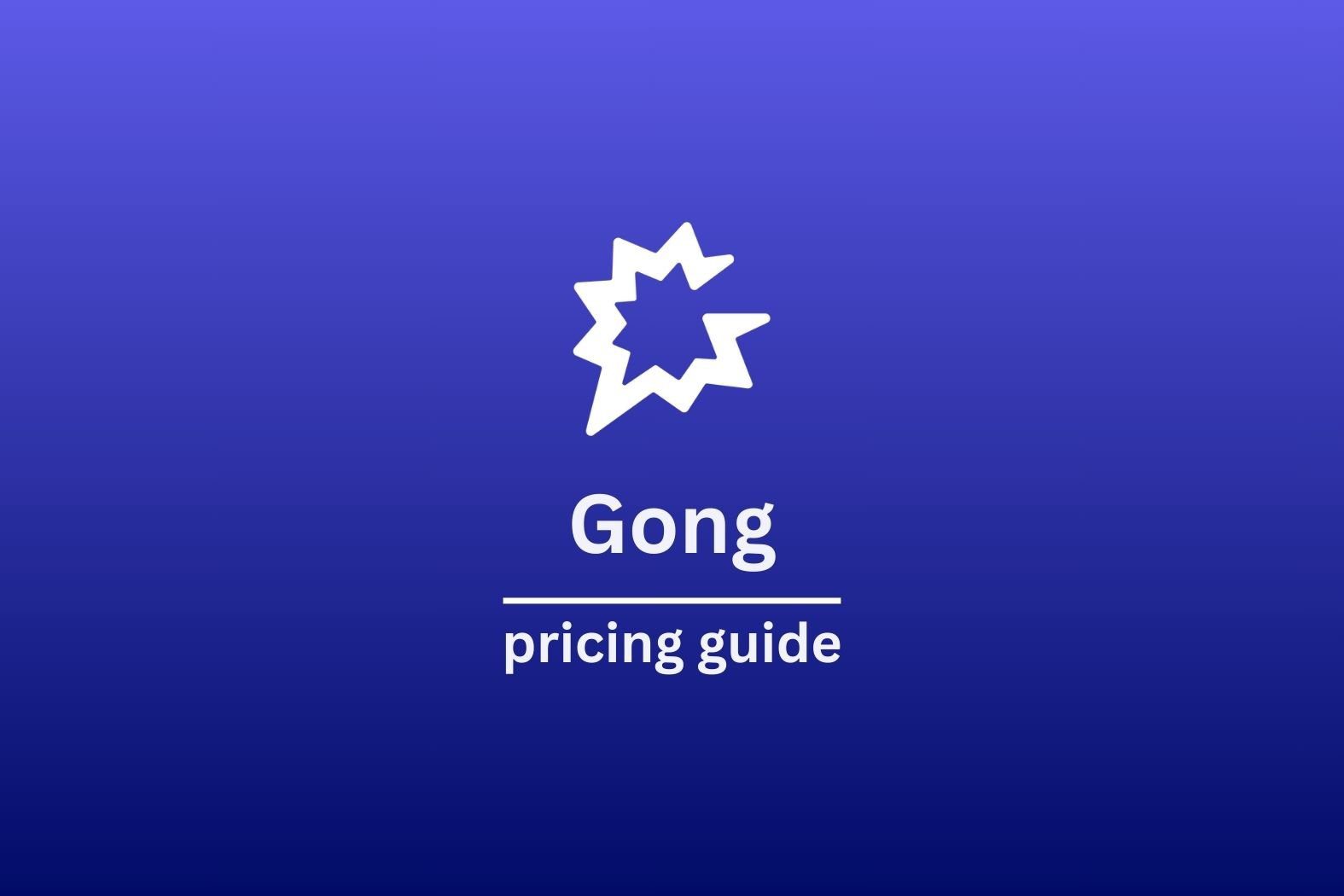Модель продаж Challenger - это уникальная стратегия продаж, которая требует, чтобы ваш торговый представитель взял на себя контроль над продажей, отменил то, что, по мнению ваших клиентов, они уже знали, а затем научил их чему-то новому.
Он стал популярен с тех пор, как Мэтью Диксон и Брент Адамсон написали о нем в своей книге " Продажа по вызову:Taking Control of the Customer Conversation. Но как вы можете использовать его в своих отделах продаж? И действительно ли вам это нужно?
Исследование Gartner показало, что покупатели на 57 % проходят процесс покупки до того, как у них возникает первый значимого контакта с продавцом. Это говорит о том, что потенциальные покупатели проводят собственное исследование, прежде чем присоединиться к разговору о продаже. У них уже есть предвзятое мнение о вас и вашем бренде. С помощью модели продаж Challenger вы сможете перевернуть их все.
Давайте разберемся в этом немного подробнее...
Что такое модель продаж Challenger?
Модель продаж Challenger - это методика, которую используют торговые представители, чтобы нарушить ход мыслей клиента и заставить его немедленно обратить на себя внимание. Она побуждает торговых представителей выйти за рамки традиционных методов построения отношений и сосредоточиться на предоставлении ценности через понимание, обучение и напористое лидерство.
Для этого он использует три "Т": обучение, адаптация и контроль.
Пример
Представьте, что вы - клининговая компания, изучающая, как сети продуктовых магазинов и ресторанов могут сократить расходы на уборку на 15 %, используя экологичные чистящие средства.
Пример подхода к продажам Challenger:
Мэтт: "Привет, я Мэтт из компании EcoClean. Я изучал, как продуктовые магазины могут сократить расходы на уборку на 15 %, используя экологичные чистящие средства. Могу ли я поделиться с вами своими соображениями?"
Руководитель компании Green Grow: "Конечно, сейчас мы используем обычные чистящие средства".
Мэтт: "Экологичные решения не только сокращают расходы, но и повышают безопасность магазинов и удовлетворенность покупателей. Например, в аналогичной сети FreshMart после перехода на новые технологии на 20 % сократилось число случаев падения и поскальзывания. Может быть, вас заинтересует короткая демонстрация, чтобы посмотреть, как это может работать для Green Grow?"
Руководитель компании Green Grow: "Звучит интересно. Давайте договоримся о демонстрации".
Вы здесь для того, чтобы предлагать решения существующих проблем. Даже тех проблем, о существовании которых они не подозревали. Искусство владения методом Challenger Sales заключается в том, чтобы делать именно то, о чем говорится в его названии: бросать вызов своему клиенту.
Не для слабонервных
Вы увидите огромный прирост в заключении сделок представителями, если они уменьшат эмоциональную сторону деловой сделки. Исследование модели продаж Challenger показало, что те, кто использует эту методологию продаж, на на 370 % больше шансов заключить сделку (54 % против 11,5 % в среднем) в сложной ситуации, чем другие четыре типа торговых представителей.
Однако не все представители созданы для того, чтобы быть продавцами-претендентами. Во многих случаях этот метод может привести к честным, сильным дебатам и многим домашним истинам, касающимся продукта или бизнеса. Это не для слабонервных. Однако если представитель претендента провел исследование, беспокоиться не о чем. Клиент поймет, что представитель потратил время и силы на то, чтобы понять ситуацию клиента.
Модель продаж Challenger - это один из пяти профилей продаж, которые Брент Адамсон и Мэтью Диксон создали для каждого торгового представителя. В инфографике, представленной ниже, вы найдете более подробное описание...

Основные принципы модели продаж Challenger
Три столпа закладывают основу модели продаж Challenger, известной как "стиль продаж TTT". Они заключаются в следующем:
- Обучение. Торговый представитель, претендующий на победу, призван обучать и информировать. Они предложат клиенту все свои знания и идеи, чтобы опровергнуть существующие взгляды клиента. Эти знания заставляют клиента задуматься о том, что он знал изначально, и одновременно формируют элементы доверия, основанные на профессионализме вашего представителя.
- Индивидуальный подход. После того как ваш представитель заинтересует клиента и вызовет у него интерес, он подстроит ваше торговое предложение под каждого клиента, исходя из его задач и целей. Это приведет к более персонализированному взаимодействию и большему успеху.
- Возьмите управление на себя. Представитель претендента отвечает за направление разговора. Они не должны бояться подвергать сомнению уже сложившиеся взгляды, но при этом не антагонизировать, а находить оптимальные решения для запросов клиента.
Большинство сотрудников вашего отдела продаж смогут научить своих клиентов чему-то новому, при этом подбирая предложение в соответствии с потребностями клиентов. Взять себя в руки - это самая сложная часть освоения модели продаж Challenger, но и самая важная.
Если ваши представители не возьмут все в свои руки, как они смогут направить клиента к лучшим ответам на его проблемы?
"Как нельзя быть эффективным учителем, если не подгонять своих учеников, так нельзя быть эффективным челленджером, если не подгонять своих клиентов".
Мэтью Диксон, соавтор книги "Продажа Челленджера Tweet
Кто больше всего выигрывает от модели продаж Challenger?
Внедрение метода продаж Challenger - это не просто улица с односторонним движением. Многие получают выгоду. Давайте посмотрим на некоторых из них...
1. Профессионалы в области продаж
- Больший успех: Торговые представители, использующие модель challenger sales, заключают больше сделок и достигают более высоких показателей продаж, потому что они последовательно применяют этот метод. Представители, обученные всестороннему изучению клиента и его бизнеса, с большей вероятностью смогут предоставить более глубокие знания, которые выделят их среди других.
- Улучшает навыки продаж: Торговые представители, овладевшие искусством быть претендентом, способны более глубоко общаться с клиентами, провоцируя дискуссии, которые подчеркивают ценность для клиента.
- Последовательные продажи: Структура модели обеспечивает последовательный подход к продажам, благодаря чему результат легче предсказать.
2. Клиенты
- Улучшенные решения: Клиенты только выигрывают от того, что им предлагают различные решения проблем, с которыми они сталкиваются. Когда их заставляют думать по-другому, это часто приводит к инновационным решениям, которые они могли бы и не рассматривать.
- Образование: Инновационные решения предполагают постоянное изучение проблем, с которыми сталкивается бизнес клиента. Этот метод не только поможет им принять решение, но и будет иметь образовательную ценность.
3. Предприятия, внедряющие модель
- Увеличение доходов: Если вы внедрите модель продаж Challenger в свой бизнес, вы получите более высокие доходы, поскольку она повышает эффективность работы вашей команды, заключающей сделки и осуществляющей апселлинг.
- Преимущество перед конкурентами: Если ваша команда глубже вникнет в бизнес клиента, она предоставит ему уникальные знания и бросит вызов. Это полностью отделяет вашу команду от конкурентов, которые все еще руководствуются традиционными методами продаж.
- Более крепкие отношения: Хотя модель challenger sales не фокусируется на построении отношений, она обеспечивает более глубокое, консультативное взаимодействие с клиентом, что может привести к повышению удовлетворенности и долгосрочной лояльности.
4. Менеджеры по продажам
- Повышение эффективности работы команды: Менеджеры по продажам не могут не выиграть от того, что у их команды есть последовательный процесс продаж, на основе которого они могут работать. Модель продаж Challenger закладывает основу для обеспечения последовательных и высоких результатов работы вашей команды.
- Эффективный коучинг: имеяуже готовые рамки Challenger, вам будет проще подсказать своей команде, какнаиболее эффективноиспользоватьметодпродаж Challenger.
5. Маркетинговые команды
- Согласованные сообщения команды: Маркетинговая команда выигрывает от согласования с отделом продаж, обеспечивая последовательность и ясность послания для маркетинговых кампаний и материалов.
- Более качественный контент: При наличии последовательной структуры понимание, которое дает модель продаж Challenger, повышает качество контента. Чем выше качество контента от маркетинговой команды, тем более вовлеченными и образованными будут чувствовать себя ваши клиенты.
Внедрение модели продаж Challenger
Внедрение модели продаж Challenger может оказаться непростой задачей. Ваш отдел продаж должен обладать знаниями, необходимыми для того, чтобы привести своих клиентов к принятию более обоснованных решений о покупке. При правильном подходе ваша команда задействует страхи потенциальных покупателей, показывая, к чему приведет запоздалая реакция на их проблему.
Когда клиент чувствует беспокойство, ваши торговые представители должны быть готовы предложить ваш продукт или услугу в качестве решения его текущей проблемы. Вы можете реализовать суть модели продаж Challenger за 5 шагов...
1. Создайте авторитет
Убедитесь, что ваш отдел продаж укрепляет доверие к своим клиентам с помощью эффективной коммуникации. Уделите особое внимание пониманию их проблем с помощью обширного исследования. Сейчас не время представлять свой продукт, вместо этого разговор должен быть полностью сосредоточен на проблемах ваших клиентов.
2. Переосмыслите проблемы
Если ваш отдел продаж копнет глубже и попытается найти корень проблем потенциального клиента, он сможет переосмыслить их как возможность. С помощью этого метода они заставляют участников обсуждения взглянуть на проблему с новой точки зрения, и, если все пройдет успешно, потенциальные клиенты начнут менять свои представления о том, каким, по их мнению, может быть ответ на их проблемы.
3. Эмоциональный интеллект
Модель продаж Challenger разработана таким образом, чтобы уменьшить эмоциональную связь и увеличить количество фактов, подкрепленных данными. Однако некоторые эмоции необходимы. Подсознательное решение вытекает из эмоционального отклика потенциального покупателя. На самом деле, 95 % всех решений о покупке происходит из-за эмоциональной связи. Эта статистика подчеркивает важность использования эмоций, а не только фактов и цифр в вашем предложении о продаже. Чем больше потенциальный покупатель сможет почувствовать личную связь с вашим продуктом, тем больше он будет заинтересован в покупке.
4. Предложить значение
Прежде чем вы начнете предлагать свой продукт как решение всех их проблем, дайте им понять, каким будет будущее, если они будут действовать иначе. Покажите им плохой сценарий, чтобы они больше доверяли вашему хорошему сценарию.
5. Представьте свой продукт
Последний шаг должен быть самым простым. Самые лучшие торговые представители, работающие по принципу "претендента", возьмут проблему клиента и представят альтернативные решения, даже ни словом не обмолвившись о вашем продукте. Если таким образом они завоевали доверие и процесс был соблюден правильно, то последний кусочек головоломки - представить ваш продукт в качестве решения.
Потенциальные трудности и проблемы
Несмотря на то что модель продаж Challenger может быть чрезвычайно эффективной при правильном использовании, у нее есть и свои недостатки. Как и любая другая методология продаж, эта техника может исчерпать себя, если ваша команда будет использовать ее слишком часто. Кроме того, вполне возможно, что ваш клиент воспримет ее как очередную хитрую технику продаж, особенно если она не будет использоваться с максимальной эффективностью.
Вот несколько распространенных недостатков, связанных с этой методикой продаж.
Комплексные требования к обучению
Когда вы внедряете модель продаж Challenger, это требует не только обширных исследований, но и большого количества обучения и развития. Обучение может занять много времени, стоить дорого и быть сложной процедурой. Имейте в виду, что не все члены вашей команды примут метод продаж Challenger. Не каждый торговый представитель является претендентом!
Сопротивление команды
Большинство отделов продаж обучены и привыкли к традиционным техникам продаж. Попытка изменить образ мышления и подход к продажам может оказаться сложной, поскольку люди не любят перемен. Этот метод имеет конфронтационную основу, что также может быть некомфортно для некоторых. Для многих отделов продаж он не является второй натурой. Если не управлять этим методом должным образом, это может привести к тому, что ваша команда начнет сопротивляться.
Несогласие клиента
Будем честны, многие клиенты негативно реагируют на тех, кто оспаривает их мыслительный процесс, особенно если они уверены, что знают ответ. Такой подход может быть воспринят как агрессивный или высокомерный, что приведет к ответным действиям со стороны клиента. Такой подход может испортить отношения и, как следствие, привести к потере продаж, если метод оспаривания не будет подобран правильно.
Отсутствие согласованности
Согласование работы отдела продаж и отдела маркетинга так важно для обеспечения последовательного и глубокого контента для ваших клиентов. Контент призван обучать аудиторию. Без такого согласования усилия вашей команды по продажам могут не оправдаться. Очень важно, чтобы информация, которую предоставляет ваша команда, была подкреплена исследованиями, полученными из контента, который выпускает ваша маркетинговая команда.
Не универсально применимо
Модель претендента подходит не для каждой отрасли и не для каждой компании, занимающейся продажами. В частности, компаниям, которые сосредоточены на построении взаимопонимания и развитии долгосрочных отношений, подход претендента может не подойти. Претендентский подход к продажам является совершенно нестандартным и подходит далеко не всем.
Альтернативные модели продаж, которые следует рассмотреть: Может ли она работать с другими методами?
Из-за сложности мира продаж современный покупатель, прежде чем совершить покупку, тщательно изучает ситуацию. Они пытаются составить представление о том, что им нужно, какую пользу это принесет и сколько они хотят за это заплатить. Хотя большинство торговых представителей учат сосредотачиваться на продаже через преимущества продукта, это не всегда самый эффективный подход.
Говоря прямо, клиенты стали более усердными, чем когда-либо прежде.
Однако лучшие торговые представители не сосредотачиваются только на одном процессе продаж. Класть все яйца в одну корзину редко бывает разумно. В конце концов, все клиенты разные, и торговым представителям нужно уметь адаптироваться. Они должны быть гибкими, чтобы менять свой стиль в зависимости от того, с кем они разговаривают. В один день они могут использовать метод претендента, а в другой им, возможно, придется совершить обратную продажу.
Существует целый playbook методов, которые можно использовать в дополнение к методу претендента. Давайте более подробно рассмотрим альтернативные модели продаж, как они могут помочь и как они сравниваются с методом претендента...
Традиционные продажи
Если вернуться к основам, то традиционные продажи полностью сосредоточены на том, чтобы активном слушании проблемы клиента, а затем создать решение, соответствующее его потребностям. В связи с новыми волнами методов продаж традиционные продажи устарели, поскольку они предполагают, что ваш клиент не знает многого о продукте, который он ищет.
Как мы видели выше, в среднем современный покупатель проходит более половины пути к покупке, прежде чем обратиться к кому-либо напрямую. Это делает традиционные продажи менее эффективными по сравнению с методом претендентов. Современные покупатели просто лучше образованы и не хотят часами разговаривать по телефону, рассказывая вам о своих проблемах.
MEDDIC
MEDDIC - это сокращенный список критериев, обозначающий Метрики, Экономический покупатель, Критерии принятия решения, Процесс принятия решения, Идентификация боли и Чемпион.
Метод MEDDIC основан на проработке каждого из этих пунктов с клиентом, чтобы продвинуть сделку вперед. Это тактический процесс продаж, используемый в качестве упражнения для "галочки" на пути покупателя.
В отличие от метода Challenger, MEDDIC - это перечисленная методика повышения продаж, в то время как Challenger - это концепция общения с клиентом, чтобы убедить его в том, что ваш продукт ему подходит. Эти два метода не конкурируют друг с другом; они дополняют друг друга.
Для сравнения смотрите инфографику ниже!

Продажа SPIN
SPIN расшифровывается как Ситуация, проблема, последствия и потребность-выгода. Торговые представители, использующие метод SPIN, задают своим клиентам шквал вопросов по этим четырем категориям, чтобы адаптировать метод продаж к своим клиентам. Основное различие между SPIN и Challenger заключается в том, что претенденты учат, а продавцы SPIN задают вопросы. Оба подхода отличаются друг от друга и должны использоваться независимо друг от друга.
Продавцы SPIN вооружены любопытными вопросами, а претенденты - знаниями, которые приводят клиентов прямо к их решению; эти два понятия похожи как мел и сыр.
SNAP Продажа
SNAP означает "упрощать", "ориентироваться", "излагать" и "расставлять приоритеты". В двух словах SNAP - это стремление сделать решение потенциального клиента как можно более легким. Вы помогаете направить их мыслительный процесс, устраняя любые сомнения или опасения, возникающие у них по пути. Это подводит торговых представителей к формулированию своего ценностного предложения таким образом, что потенциальный клиент не может не быть заинтригован. В то же время, они расставляют приоритеты в соответствии с потребностями и предпочтениями клиента. Это отличный метод для новичков, поскольку он очень прост для понимания.
Продавцы-челленджеры, с другой стороны, больше нацелены на то, чтобы казаться авторитетом в своей нише. Они бросают вызов мышлению потенциального покупателя и разбираются в статистике и цифрах, подстраивая сделку под личные потребности потенциального покупателя. Оба метода могут работать; в конечном итоге все зависит от конкретного торгового представителя и потенциального покупателя.
Консультативные продажи
В отличие от остальных методов, консультативные продажи очень похожи на метод Challenger. Представитель Challenger хочет решать проблемы и находить решения, как бык в посудной лавке. В то время как консультативные продажи мягко выясняют проблемы клиента и закладывают основу для того, чтобы клиент сам разобрался в них, не говоря ему об этом.
Алекс из SalesStar Global считает, что метод претендентов - это как бы побочный результат консультативных продажно он продвинулся на шаг дальше - этот шаг заключается в обучении клиентов. Основное отличие заключается в том, что консультативные продажи можно использовать практически в любое время, в то время как метод претендента требует особого подхода. Вы должны прийти с фактами и цифрами и выложить их на стол, а также быть твердым и напористым, когда дело доходит до возражений и сомнений, тщательно и умело переформулируя их в позитивные возможности.
Будущее продаж
Метод продаж Челленджера чрезвычайно эффективен, но применять его следует осторожно. С начала 2022 года клиенты самостоятельно сообщили более 1,1 миллиарда долларов выручки благодаря модели продаж Challengers. Это процесс, который направлен на обучение, адаптацию и контроль над процессом продаж клиента, и он явно работает.
Однако не все в вашей команде могут быть претендентами. У некоторых представителей нет ни одной конфронтационной кости в теле; они просто не созданы для того, чтобы быть жестоко честными. Тем не менее, это стратегия, которой можно научиться с помощью качественных тренировок, упорства и тяжелой работы.
Помните, что не стоит использовать этот метод для каждого потенциального клиента. Используйте скоринг перспектив, чтобы выяснить, какие лиды с большей вероятностью конвертируются с помощью убедительных фактов и статистики, и применяйте его к ним. Потенциал претендента очень велик, нужно только найти правильный баланс.





